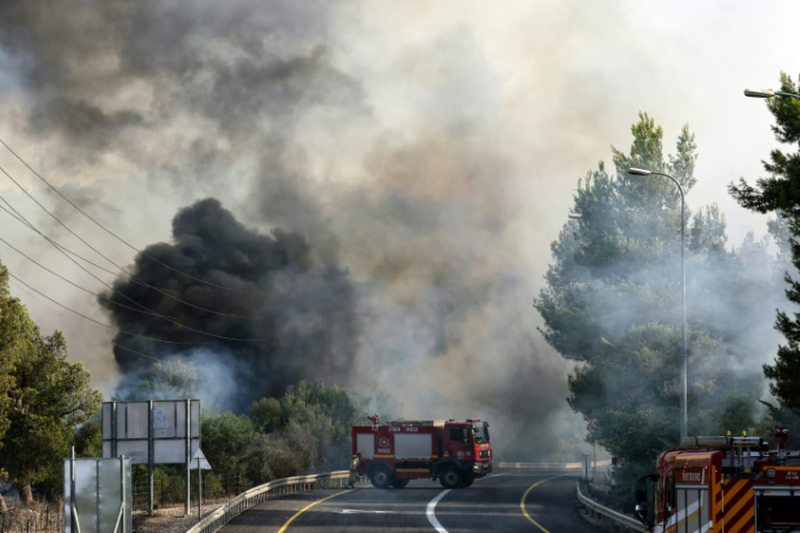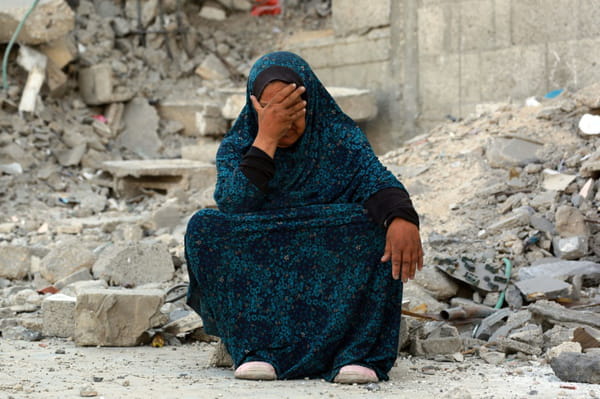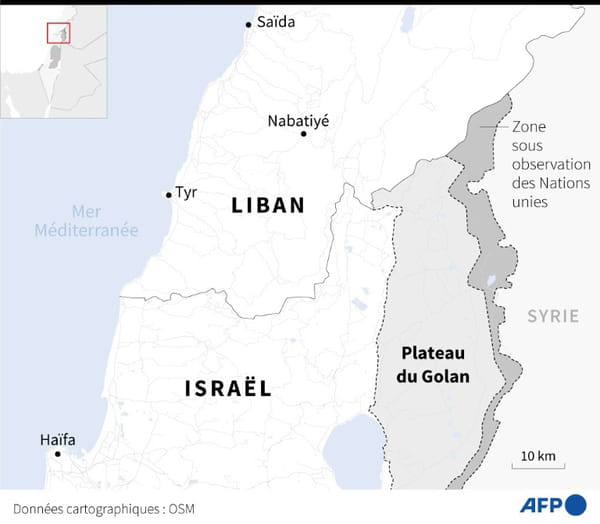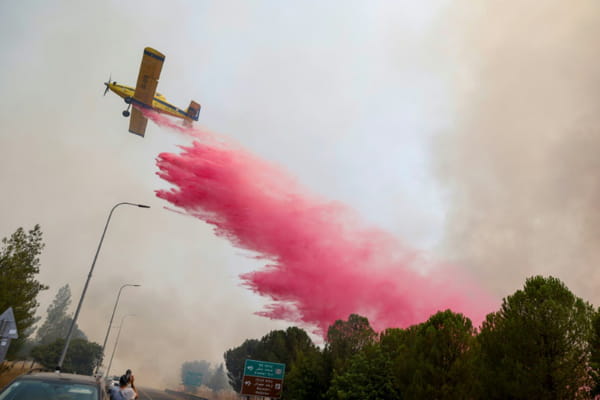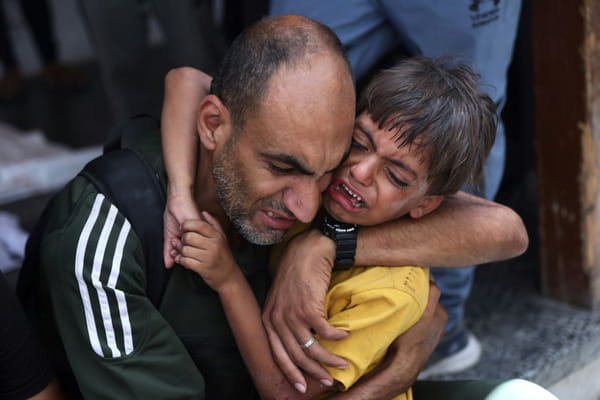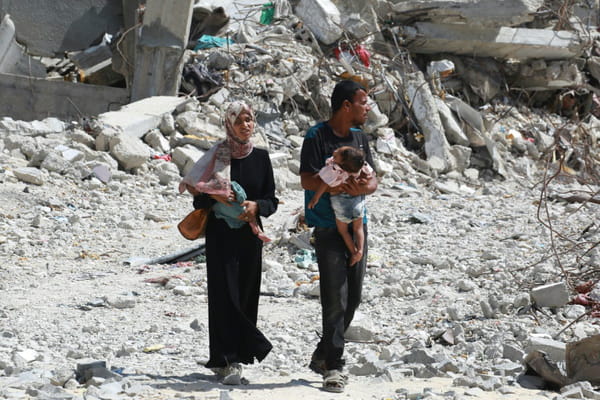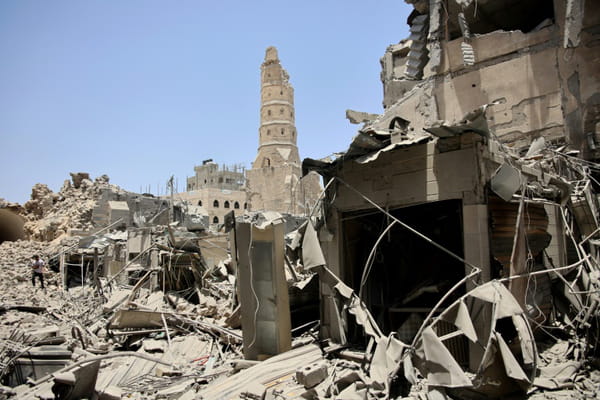Lebanon's Hezbollah fired more than 200 rockets and explosive drones on northern Israel and the occupied Golan on Thursday, raising fears of a new conflict in the region, at a time when the war in the Gaza Strip shows no sign of abating. At the same time, after months of deadlock, Israeli Prime Minister Benjamin Netanyahu decided to send a delegation for new negotiations on a ceasefire and the release of hostages held since October 7 in Gaza, the day after Hamas announced new “ideas” for an agreement. The head of the Israeli Mossad, David Barnea, is on his way to Qatar, one of the mediators in the Gaza conflict, a source close to the discussions said Thursday evening, with a US official referring to an “important opportunity.” In response to the attack of unprecedented scale carried out on October 7 by Hamas against Israel, the Israeli army launched a major offensive against the Gaza Strip, where the Palestinian Islamist movement has been in power since 2007. The next day, the pro-Iranian Hezbollah, in support of Hamas, opened a front with neighboring Israel and since then exchanges of fire in the border areas have been daily, sometimes gaining in intensity and coupled with belligerent rhetoric. Thursday, the Lebanese movement claimed to have fired “more than 200 rockets” and explosive drones, particularly on positions soldiers in northern Israel and in the part of the Syrian Golan occupied by Israel, the day after a first barrage of rockets. These shots, he said, are in response to Israel's elimination on Wednesday of one of its commanders in southern Lebanon. After reporting alerts throughout northern Israel, as far as the occupied Golan, the Israeli army indicated that “around 200 projectiles” had been identified. Most were intercepted and falling debris caused fires in several areas. A soldier was killed by rocket fire in northern Israel, according to a military source. In retaliation, the army carried out strikes against “military installations” in southern Lebanon. A Palestinian woman sits on rubble covering her face with her hand in Khan Younés, in the south of the Gaza Strip, July 4, 2024 © AFP – Bashar TALEB “In the harsh campaign against Lebanon, we established a principle: whoever harms us is a dead man,” Netanyahu said during a visit to the IDF headquarters. the air in Tel Aviv. – “Where to go?” – The border area between Lebanon and Israel © AFP – Patricio ARANA, Sabrina BLANCHARD, Nalini LEPETIT-CHELLA Israel's main ally, the United States, has warned that a war between Israel and Hezbollah could provoke a “regional conflict”. On October 7, Hamas commandos infiltrated into southern Israel from Gaza carried out an attack which resulted in the death of 1,195 people, the majority civilians, according to an AFP count established from official Israeli data. Of 251 people kidnapped during the attack, 116 are still being held in Gaza, among whom 42 are dead, according to the army. In response, Benjamin Netanyahu vowed to destroy Hamas, considered terrorist by the United States, the European Union and Israel. An Israeli plane tries to put out fires caused by rockets launched from southern Lebanon into northern Israel, July 4, 2024 © AFP – Jalaa MAREY The Israeli army launched an air and then ground offensive in Gaza which has so far left 38,011 dead, mostly civilians, according to data from the Ministry of Health of the Gaza government, led by Hamas. According to Civil Defense, seven people were killed Thursday in Israeli strikes, including five in a school in Gaza City, in the north of the besieged Palestinian territory and bombarded by Israel for nearly nine months. Fighting continued mainly in the Shujaiya neighborhood of Gaza City, and in Rafah, in the south where an order Israeli evacuation order issued on Monday raises fears of a new major offensive. Witnesses reported intense airstrikes, artillery fire and fighting in Rafah. A Palestinian child who lost loved ones in Israeli bombings is comforted in a hospital in Gaza City, July 4, 2024 © AFP – Omar AL-QATTAA In recent weeks, fighting has resumed in several regions that the army had said it controlled, including Choujaiya. Since the evacuation order, tens of thousands of Palestinians have left areas of eastern Rafah and Khan Younes, once again thrown onto the roads of the devastated territory, in search of water, food and shelter. “We left but we don’t know where to go,” testified Oum Malek Al-Najjar, who left eastern Khan Younes with her children. – “Much to do” – A Palestinian couple holding their children walks amid destruction in Khan Younes, in the south of the Gaza Strip, on July 4, 2024. © AFP – Bashar TALEB In the Palestinian territory in the grip of a humanitarian catastrophe, 1.9 million Gaza residents, or 80% of the population, are now displaced, according to the UN. While all attempts to reach an agreement for a truce in Gaza have failed in recent months, Mr. Netanyahu's office announced that “the Prime Minister informed President (American Joe) Biden of his decision to send a delegation to continue negotiations for the release of the hostages. A Palestinian walks amid the rubble of buildings destroyed or damaged by Israeli bombings, including the Omari mosque in Gaza City, July 4, 2024 © AFP – Omar AL-QATTAA Mr. Biden welcomed Mr. Netanyahu's decision. The latest elements provided by Hamas “could provide the necessary basis for reaching an agreement”, said a senior American official who requested anonymity. But “much remains to be done on certain stages of implementation”, he indicated, warning that it would be “difficult”. Until then the belligerents have camped on inflexible positions. Benjamin Netanyahu says he wants to continue the war until “the destruction of Hamas and the release of all hostages”. And Hamas is demanding a permanent ceasefire and a total Israeli withdrawal from Gaza before any agreement on the release of hostages. All rights of reproduction and representation reserved. © (2024) Agence France-Presse